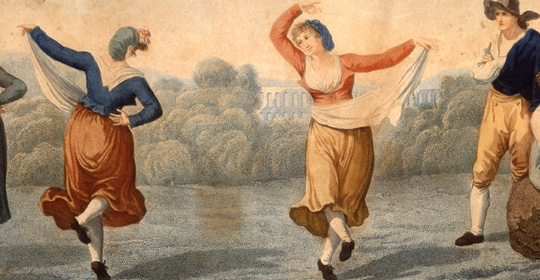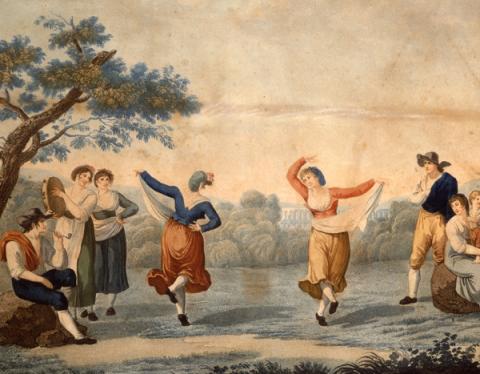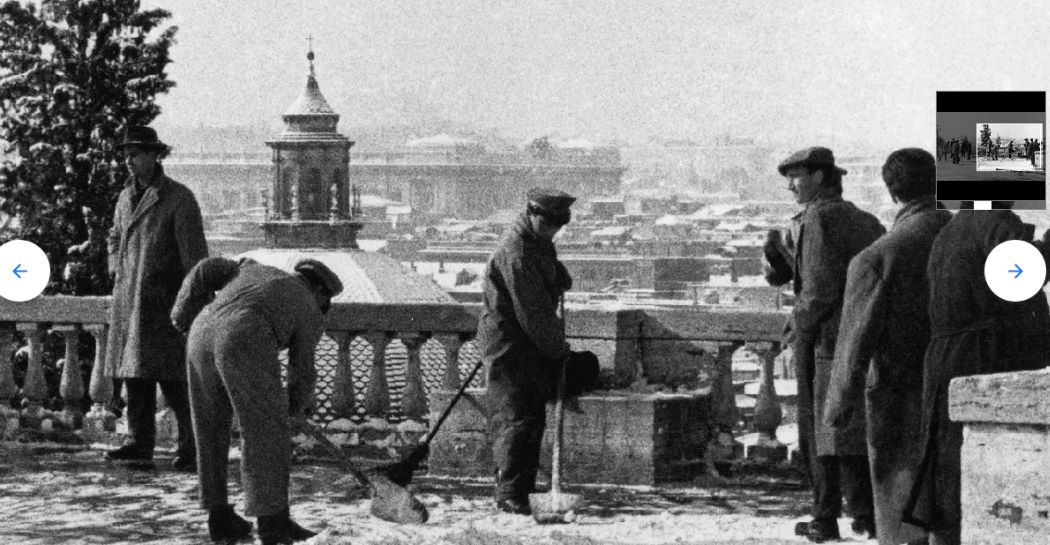The saltarello
«The characteristic dance in the Roman States is called the salterello or saltarello. (...) it is usually danced in a couple, to the sound of the guitar or drum. (...) It marks out a complete declaration of love. Jumping and turning, the one around the other, the dancers express, one at a time, the passion which they pretend to feel, the wish to please, the joy or pain, the jealousy and the hope; for the finale the man falls to one knee to convince his beloved, who gradually draws closer to him, always dancing; when she curtseys with a smile, as though to ask for a kiss, her lover rises triumphantly and a few light and lively jumps conclude the pantomime...(...) »

Thus was the popular dance which was then the most danced in Rome described by Antoine Jean Baptiste Thomas, a young French engraver who stayed in Rome from November 1816 to December 1918, and who, in his A year in Rome and its environs (Paris 1823), depicted in an attentive style his participation in more than one moment of popular Roman life.
Characteristic of the saltarello, which was, however, an improvised dance, was the jump or leap, executed by jumping from one foot to the other, either on the spot or moving backwards and forwards or turning round on oneself. The steps become more and more dense and frequent. The only compulsory move is the “salto”, the jump, which gradually becomes more and more lively and underlined by a more decisive beat of the drum.
The dance consists of continual movement, not just of the feet, but also of the arms: jumping into the air. With the hands at the sides, holding the apron (for the women) with one hand and moving it, held out in front of her with two hands. In Rome, the dancers danced separately, in the Roman countryside, however, they danced side by side, resting their arms round each others shoulders or interweaving their arms around each others bodies. The saltarello was danced in inns and out of doors, at any time and in any season.
Françoise Pinelli (a pseudonym of Bartolomeo) (1781-1835)






































